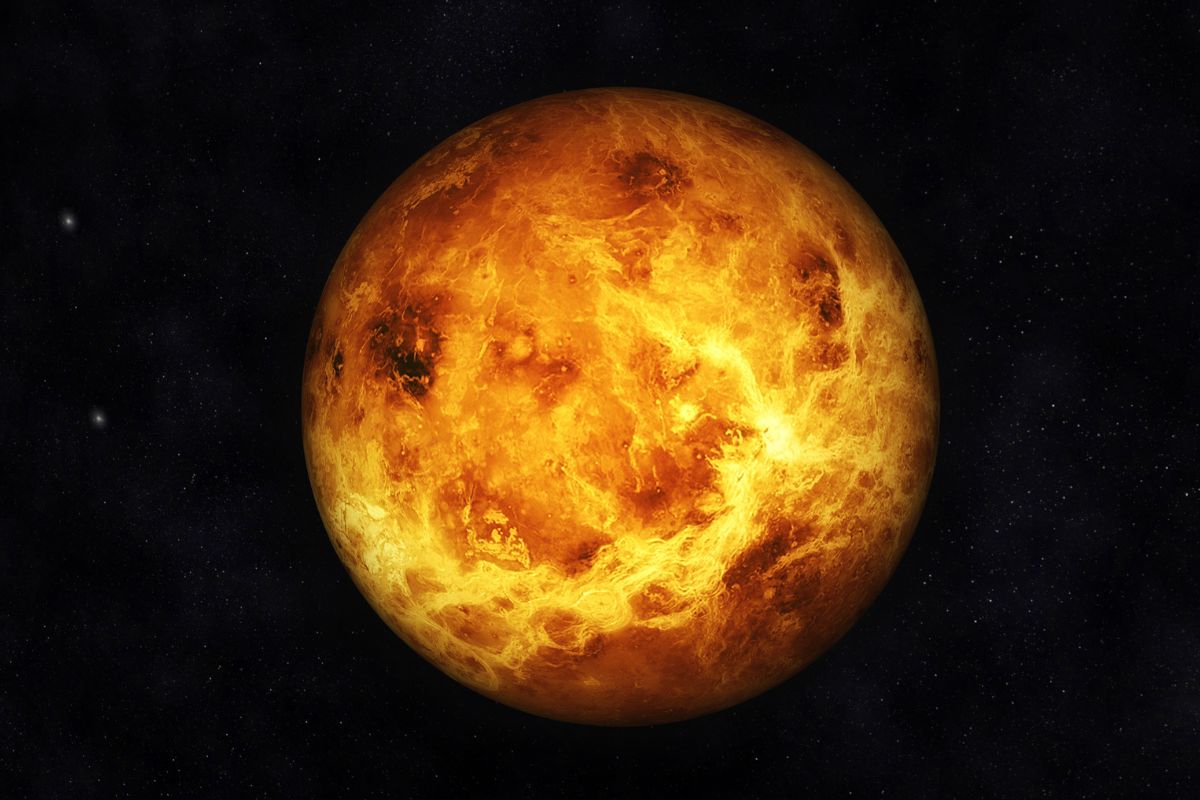Raw materials that can withstand extreme temperatures are in demand for space missions to inhospitable planets. Gallium nitride could be a hot candidate.
Blazing hot temperatures prevail on the surface of Venus, up to almost 500 degrees Celsius—enough to melt lead. In addition, the planet has a high-pressure and corrosive atmosphere. The U.S. space agency NASA describes the planet as the most inhospitable environment in the solar system, making exploration difficult: space probes have survived there for a maximum of two hours so far.
Particularly resistant high-tech components are required for future missions. Conventional silicon-based electronics only work up to around 300 degrees Celsius, writes an international team of researchers investigating whether gallium nitride could be an alternative. The material is already used on Earth in fast chargers for cell phones and laptops, as well as energy-efficient and high-performance chips. Although gallium nitride has attracted much attention recently, its properties under various conditions are not nearly as well researched as those of silicon, according to a press release from the Massachusetts Institute of Technology in the United States, which was also part of the research. A project lasting several years tested how extremely high temperatures affect the material and its performance. To this end, gallium nitride components with so-called ohmic contacts – key segments that connect a semiconductor component to the outside world – were manufactured and exposed to temperatures of up to 500 degrees Celsius in various test set-ups.

Researchers studied how temperatures of up to 500 degrees Celsius affect electronic components made of gallium nitride. The aim is to develop electronics for extremely hot environments such as the surface of Venus.
Photo: MIT News; iStock
The researchers were surprised by the result: the structures remained intact for 48 hours, which could be verified using transmission electron microscopes. Only after this period did any impairment become apparent. Work is already underway to improve the long-term performance, for example, by adding protective insulators. The results have been published in the journal Applied Physics Letters.
According to the scientists, high-power transistors for use on the surface of Venus could now be developed on this basis. However, such devices would also be able to perform various tasks on Earth, for example, in electronics for producing geothermal energy or for monitoring the interior of jet engines.
Strategic Raw Materials in Space:
While silicon is unsuitable for the blazing hot temperatures on Venus, in combination with germanium, it could enable the construction of electronics that can withstand the high radiation and extreme cold on Jupiter’s moon Europa, where extraterrestrial life could exist. Science also has high hopes for other critical raw materials when it comes to the exploration of other planets. Researchers are developing the thinnest known materials on Earth based on rare earths, for example, which are to be used in space for satellite sensors, radiation protection, and quantum computers. In turn, indium and tellurium were important for constructing the James Webb Telescope, which provided unprecedented insights into space.
Featured image: iStock/3quarks


